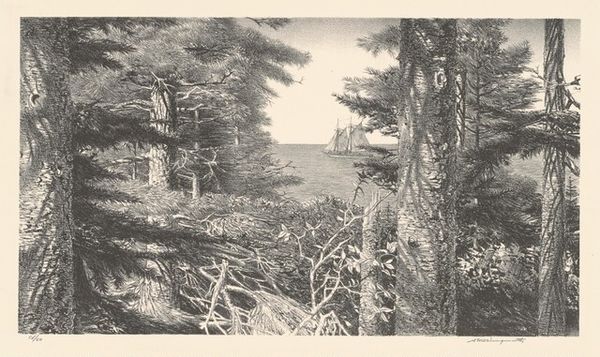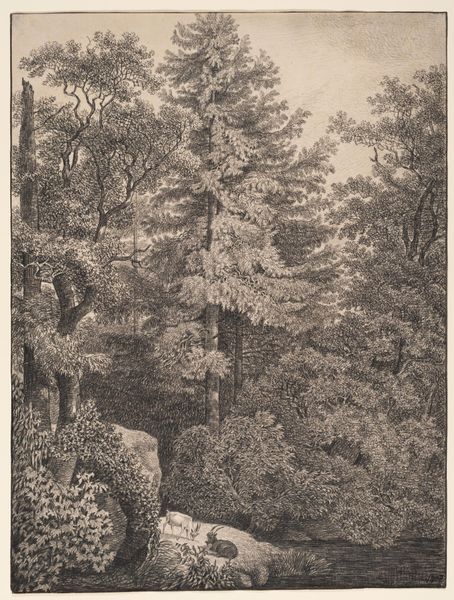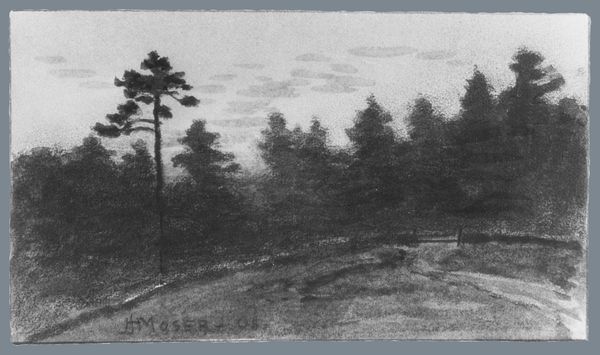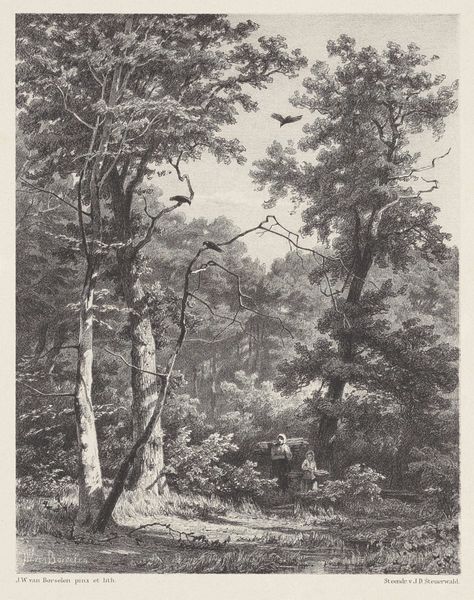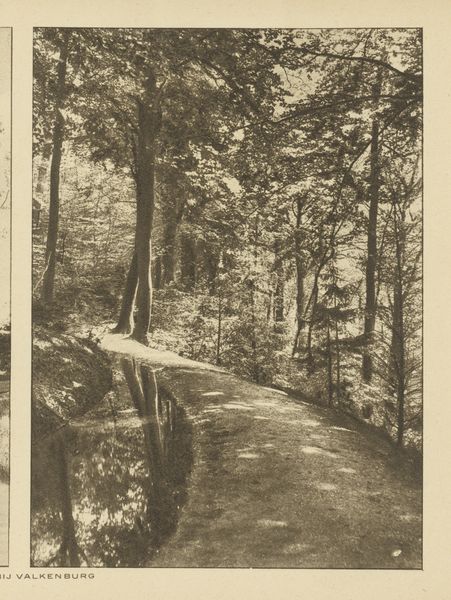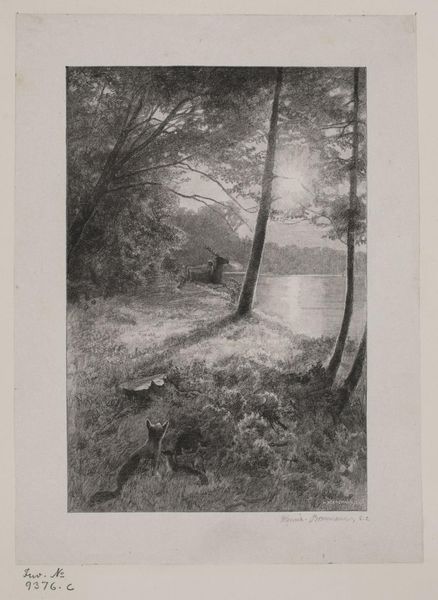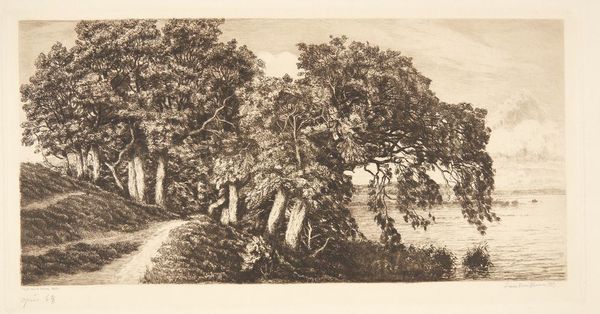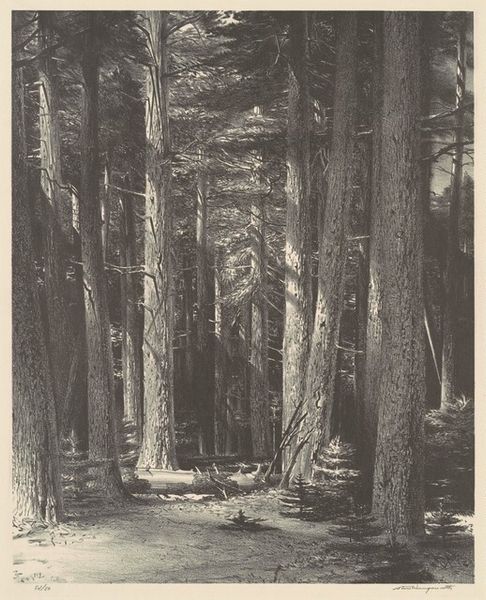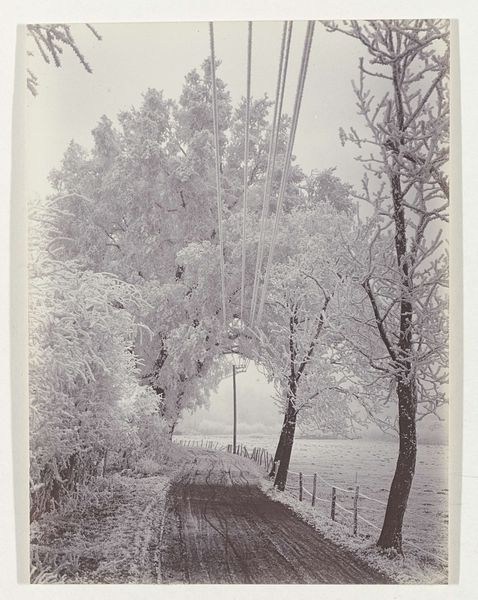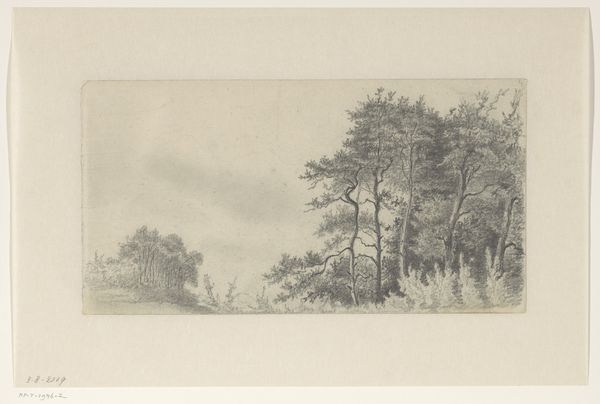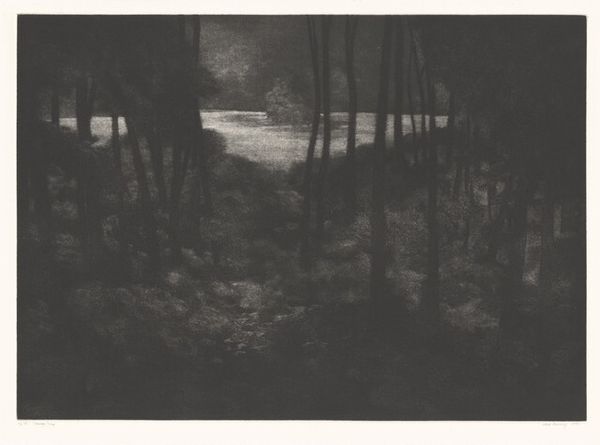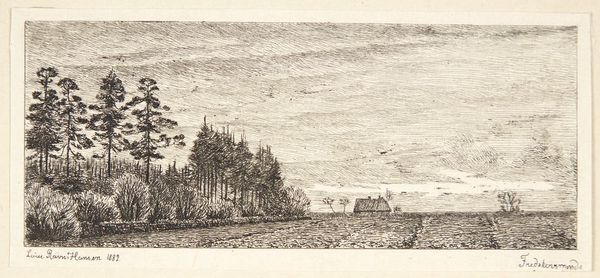
drawing, print, graphite
#
drawing
# print
#
landscape
#
graphite
#
realism
Dimensions: image: 31.27 × 45.4 cm (12 5/16 × 17 7/8 in.) sheet: 36.51 × 50.8 cm (14 3/8 × 20 in.)
Copyright: National Gallery of Art: CC0 1.0
Curator: Welcome. We’re standing before Stow Wengenroth's print, "Conflict," created in 1953. Wengenroth was known for his mastery of lithography and graphite, often depicting stark and beautiful New England landscapes. What is your first reaction? Editor: Darkly gorgeous. It's so charged – those crows, that owl…you can feel the tension hanging in the still air. It’s not just pretty; it’s a study in contrasts, isn't it? The detailed forest, almost photographically rendered, juxtaposed against the implied drama. It makes me think about power struggles in nature. Curator: It certainly evokes a strong atmosphere. Wengenroth's technique here is interesting. Although labeled as drawing and graphite print, his realism relies heavily on dramatic lighting and carefully chosen perspectives to tell stories of resilience during postwar period. The landscape almost becomes a character in itself. Editor: Absolutely! The light's theatrical, creating spotlights on key players. You’ve got these ominous ravens in flight – harbingers of ill omen, perhaps. And that single owl, confronting them directly. Owls always strike me as enigmatic creatures, symbols of hidden wisdom. What "Conflict" is it then between instinct, darkness, and... I guess wisdom of the Owl? Curator: Many interpret the confrontation between the crows and the owl as a metaphor for power dynamics – the establishment against the outsider. I would be hesitant to label any of those parts with a direct symbolic equivalence but it would serve him well when marketing art towards American conservatives. Wengenroth captured a mood of postwar resilience. The artist invites us to look closer, revealing beauty amidst an underlying tension. Editor: Resilience, yes, but also the cyclical nature of conflict. Someone is always challenged. Perhaps it also reveals Wengenroth’s vision of the "other side," as nature in art, through hyperrealism. Curator: Indeed. It prompts one to consider how natural landscapes might reflect or refract larger social narratives about authority and otherness. Editor: Well, it's made me think about it quite differently. Something about the owl’s gaze really draws me into its silent world, while at the same time fearing about impending fight, conflict or struggle! It really sticks with you, this print. Curator: An excellent reminder that landscapes contain within them the complexities of both nature and the societies which frame and observe them. Thanks for lending us your insights!
Comments
No comments
Be the first to comment and join the conversation on the ultimate creative platform.
